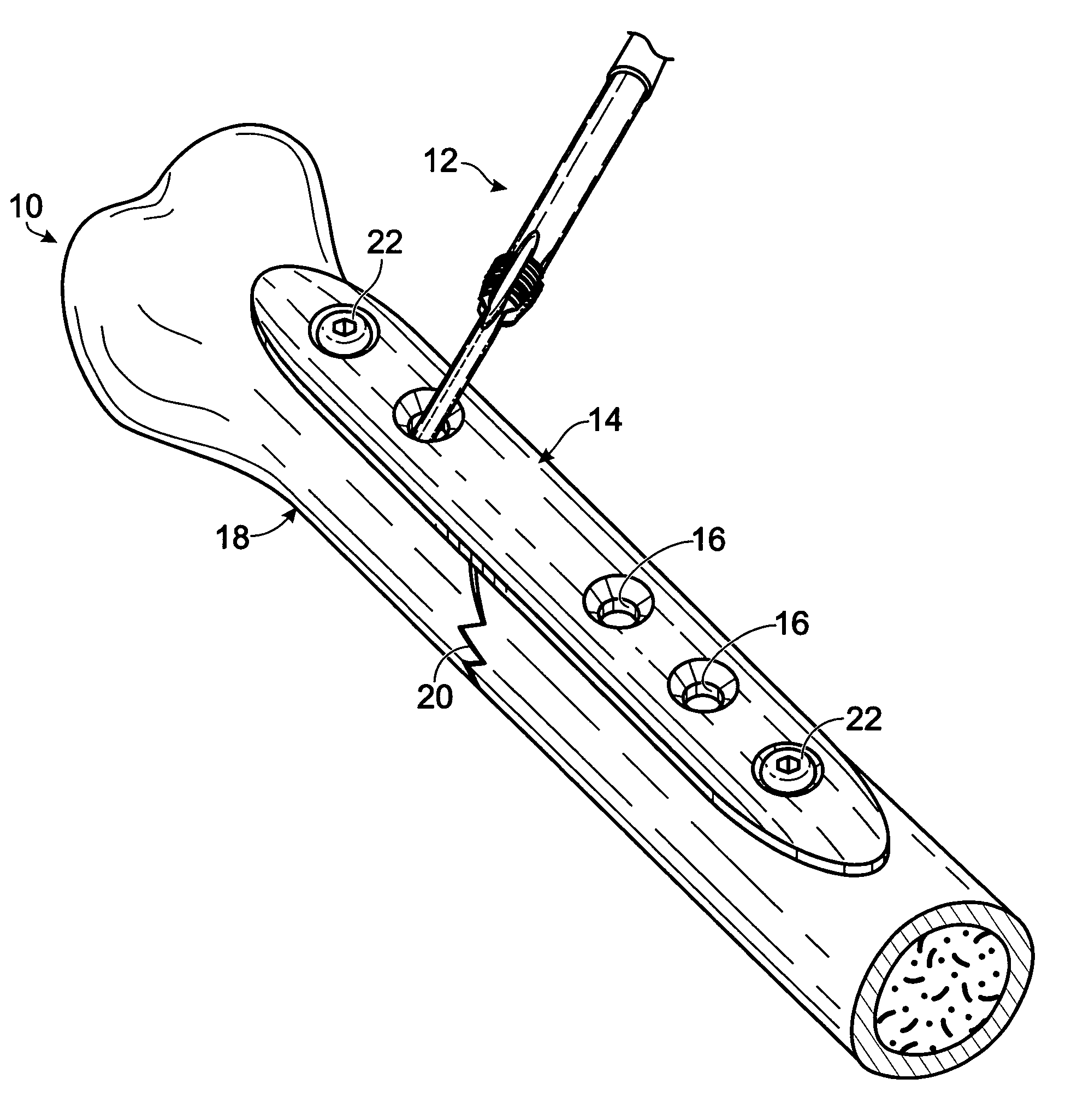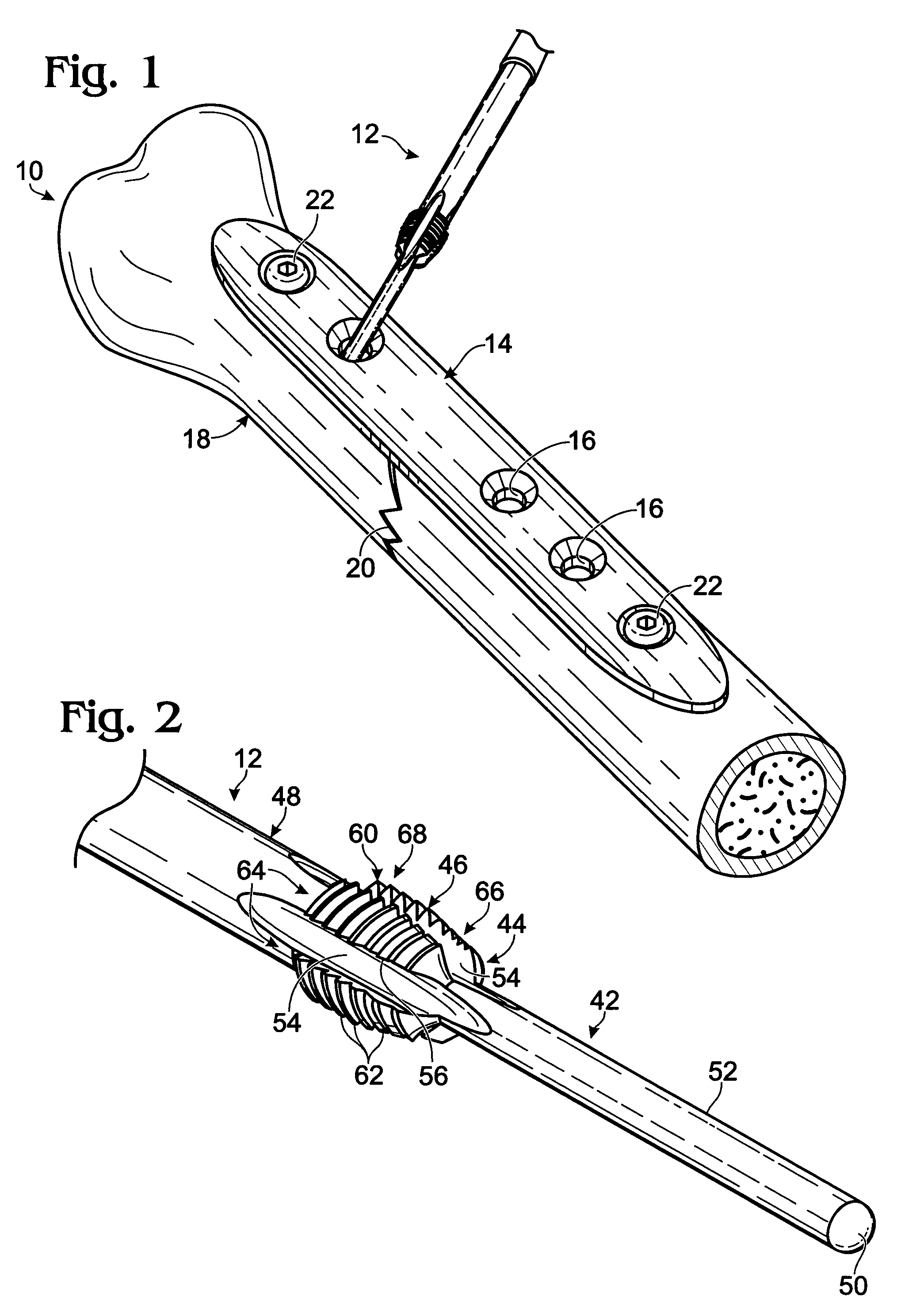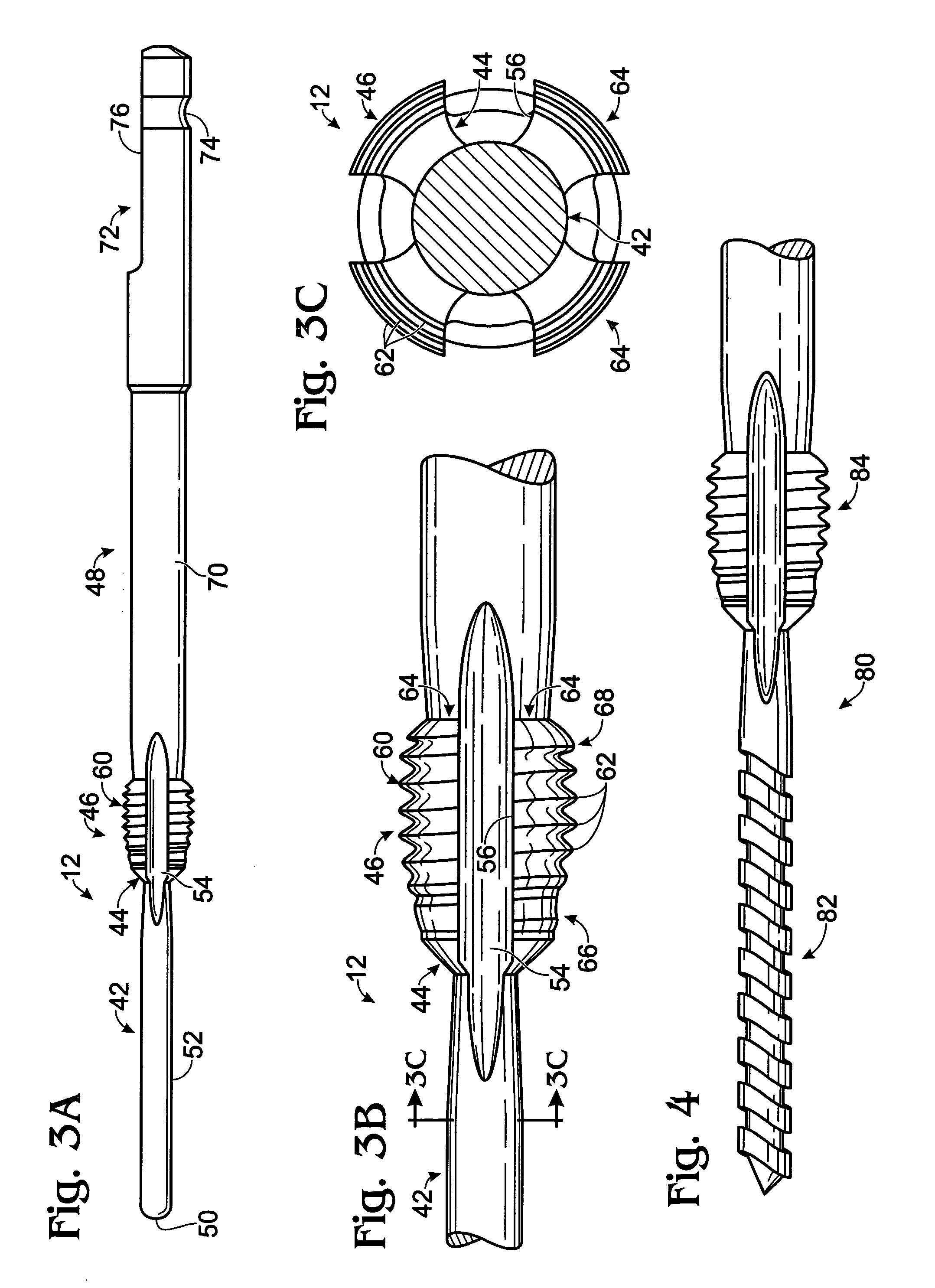Bone plates with intraoperatively tapped apertures
a technology of tapped apertures and bone plates, which is applied in the field of bone plates with intraoperative tapped apertures, can solve the problems of reducing (setting) the fracture, limiting the angle of screw installation, and reducing the fracture rate of the threaded apertur
- Summary
- Abstract
- Description
- Claims
- Application Information
AI Technical Summary
Benefits of technology
Problems solved by technology
Method used
Image
Examples
Embodiment Construction
[0020]The present teachings provides systems, including apparatus, methods, and kits, for selectively tapping apertures of bone plates, to form threaded apertures during installation of the bone plates (i.e., intraoperatively). These systems may allow a surgeon to choose independently between threaded and nonthreaded engagement with a fastener for different apertures of the bone plates, so that each fastener can be locked or not locked, respectively, to the plates. Moreover, these systems may allow the surgeon to choose the angle at which fasteners engage the bone plate and bone, by allowing the apertures to be tapped at selected angles.
[0021]FIG. 1 shows an exemplary system 10 for intraoperatively tapping an aperture(s) of a bone plate. The system may include, among others, (1) a tap device 12, (2) a bone plate 14 having one or more apertures 16, and (3) fasteners to be received in tapped and / or nontapped apertures of the bone plate. The tap device may be used to form a thread in (...
PUM
 Login to View More
Login to View More Abstract
Description
Claims
Application Information
 Login to View More
Login to View More - R&D
- Intellectual Property
- Life Sciences
- Materials
- Tech Scout
- Unparalleled Data Quality
- Higher Quality Content
- 60% Fewer Hallucinations
Browse by: Latest US Patents, China's latest patents, Technical Efficacy Thesaurus, Application Domain, Technology Topic, Popular Technical Reports.
© 2025 PatSnap. All rights reserved.Legal|Privacy policy|Modern Slavery Act Transparency Statement|Sitemap|About US| Contact US: help@patsnap.com



